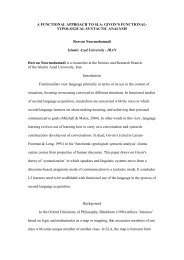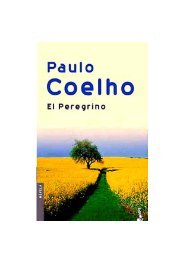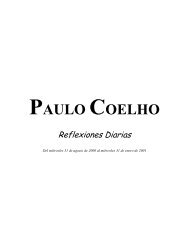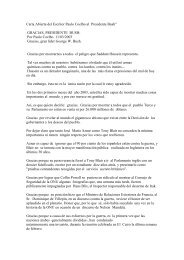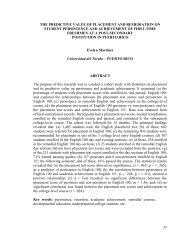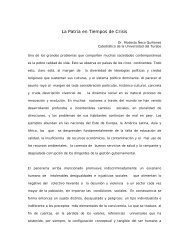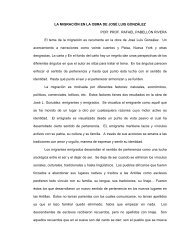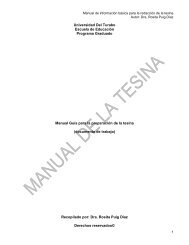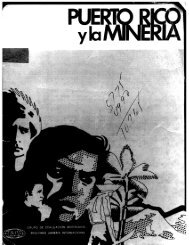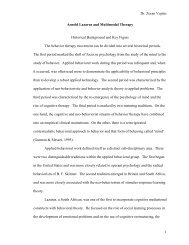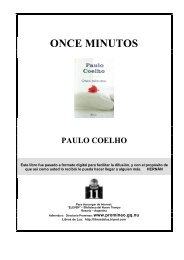Jennet Rodriguez Betancourt
Jennet Rodriguez Betancourt
Jennet Rodriguez Betancourt
Create successful ePaper yourself
Turn your PDF publications into a flip-book with our unique Google optimized e-Paper software.
1). According to Meléndez Muñoz, Alonso begins integrating in his stories the typical<br />
characteristics of the Puerto Rican of the time and how the very soul and spirit are<br />
artistically captured in an entirely collective manner. In fact, in verses like Un<br />
casamiento jibaro, El baile del garabato, Una pelea de gallos, and La fiesta de Utuao,<br />
this author describes the customs and traditions of the country folk of the island. By<br />
choosing to relate humorous jíbaro stories and even signing with the pseudonym el<br />
gíbaro de Caguas, this author wisely saved his book from censorship.<br />
In Scene IV, Un Casamiento Jibaro, the clothes worn by the bride and groom are<br />
described in vibrant jíbaro speech which clearly reveals a different manner of speaking,<br />
“… Los hombres ensapataos<br />
Y casi toos con chaqueta,<br />
Yeban aygunos pañuelo<br />
Amarrao en la cabesa<br />
Y sombrero e pelo negro,<br />
Tejio entero, o de empleyta,<br />
Camisas aymionaas,<br />
Y carsones e tapeta.<br />
Las mujeres yebangorras<br />
De pelo con plumas negras,<br />
Guantes de lagoon tejios.<br />
In, La fiesta de Utuao, a story to compae Pepe is narrated about the jbaro’s<br />
experience at the festivities in Utuao, the municipality that “…como es sabido,<br />
representaba el espacio típico de la jibaridad de la montaña…” (Forastieri-Braschi<br />
XXXII). Food, dance, men, women, the usual brawl (which accompanied most parties),<br />
the town mayor, and the priest were all portrayed with lively peasant language and style.<br />
10




